The term “open source” refers to something that anybody can investigate, alter, and distribute. Collaboration, transparency, and community-oriented development are celebrated in this approach to building computer systems. Open-source software is usually a free product with source code available. They can improve performance, add features, and resolve bugs. LibreOffice, Mozilla Firefox, and Chromium are among the examples. Proprietary software is also known as “closed source software.” Only the program’s owners have access to the source code. Microsoft, Adobe, and Apple all have proprietary software.
The Biggest Example is Windows and Linux Operating Systems.
Windows is the standard in the small business of large enterprises. The operating system can offer a platform for most services that you need. It is easy to administer because there is a GUI to do everything you need. The Linux kernel has seen rapid growth in the market share over the last few years. They have been able to offer a stable, secure, and cheaper TCO over time. Linux also experiences fewer viruses and attacks than windows servers. In my option, Linux is better suited for a server environment for these reasons.
Linux Servers can be used in production for years without failures and handle all more extensive processes running than their Windows counterpart. Linux also can have updates and configurations change without needing to be restarted. Security, The default install of Linux is secure by default and lets the admin choose to access the server that the end-user needs. Windows is usually wide open upon installation and requires the admin to secure it, allowing for security gaps.
Now Here’s 5 Reason Open Source Software Can Help Your Business
Security
Every day, thousands of eyes sift through the open-source project’s code or documentation. A problem is more likely to be spotted and repaired quickly if enough eyeballs are looking at and testing a piece of code. Outsiders have no idea what issues exist in closed-source proprietary software. When a bug is detected, it can take weeks or months for a company to release a fix. Expensive proprietary software favors security through obscurity. Open-source software may have more “discovered bugs than closed source software, but those bugs are usually found and addressed fast. Proprietary software is more prone to issue discovery following significant releases and can take longer to fix. In the meanwhile, good luck to all enterprises.
Flexibility
Open Source Software you can use and modify it to suit your needs—no need to spend extra money or put up with subpar software. When you buy proprietary software, you are “locked-in” to its solution. WordPress is an excellent example, embraced by cities, towns, universities, and buisness websites. Windows and Office are good examples. They are designed to work only within the Microsoft ecosystem and do not integrate with third-party apps. When you use open source software, you are not bound by the software vendor’s vision or mandates. You can use the product however you choose.
Community
Many teams and people work together to create open-source software. They value freedom and want their program to be easy to use. Most well-known open-source projects have forums, wikis, newsgroups, and even live chats. The open-source community is unsurpassed in size, passion, knowledge, and initiative.
Quality
Open-source software is more likely to meet end-user needs because its creators are frequently ended, users. Open source isn’t about what vendors think their customers desire. Users and developers contribute to the project by adding new features and solutions to the software. Because of its technical advantages, many organizations select open-source solutions.
Cost: There is no such thing as free software
When many people think of open source software, they believe there is a cost associated with it. Open-source software has many of the same expenses that proprietary software has but without licensing. With open-source, you own the code and do not rent it from a vendor.
Cost
- Cost of Installation
- Cost of customization and integration
- Cost of data migration from existing systems
- Cost of hardware
- Cost of training
- Cost of support
Open Source software does, in many cases, have a lower total cost of ownership (TCO), and that is given by the fact that you don’t have to “rent” a license from a company. Yes, if you read the agreement for a vendor that sold you that software, you are renting that software. You can’t install it on all your devices; you can’t give it to your friend, you can make copies, etc. The term “free software” is the equivalent of free speech and has nothing to do with cost. Typically you will never pay for a license. You will pay for support if you need it.
Okay, It’s mostly free But Give To Total Freedom Over Your Software.
- The freedom you use the software as your requirements
- Freedom to modify the source code per your requirements
- Freedom to distribute the source code as-is
- Freedom to distribute the source code with modifications
Since the software is free to use as you see fit, the cost of licensing is eliminated. So while you might pay for hardware, implementation, training, and support, your TCO is significantly reduced. With any solution, you are going to have those costs. This will allow you to reinvest more money back into your business. Using open-source code, you are welcome to modify the code to your requirements. You don’t have to contact the software vendor for source code “most of the time; they will not” need to make modifications. You have complete control to make the software fit your business, which allows your end-users to have the features they need to do their job effectively. You have the option to install the software on as many devices as you want without limit. You are welcome to share software with anyone you wish. On a typical deployment, you can cut your deployment cost by 30% or more. So while it is not free, you are saving money, and it gives you a remarkable amount of freedom back as a business owner.
Conclusion
This alone should be sufficient to convince you to embrace open-source software. Proprietary software (particularly business-facing software) might be prohibitively expensive upfront or bleed you dry over the course of a yearly subscription. All of those fees add up and are probably sucking more money out of your business than you think. Take the plunge. Eliminate the cord. Open-source software extends a warm welcome to you. Take back the freedom in your business and contact Pegas Technology Solutions Today. W\e leverage free open source software for our client’s solutions. This allows for solutions to be customized for the business that they own. We deliver them the fill source code to eliminate vendor lock-in.











